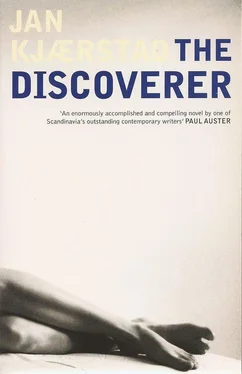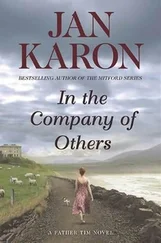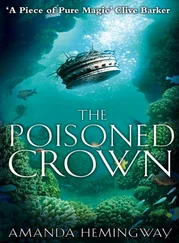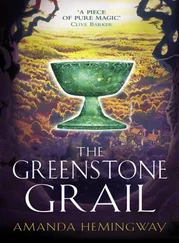Jan Kjaerstad - The Discoverer
Здесь есть возможность читать онлайн «Jan Kjaerstad - The Discoverer» весь текст электронной книги совершенно бесплатно (целиком полную версию без сокращений). В некоторых случаях можно слушать аудио, скачать через торрент в формате fb2 и присутствует краткое содержание. Год выпуска: 2009, Издательство: Arcadia Books, Жанр: Современная проза, на английском языке. Описание произведения, (предисловие) а так же отзывы посетителей доступны на портале библиотеки ЛибКат.
- Название:The Discoverer
- Автор:
- Издательство:Arcadia Books
- Жанр:
- Год:2009
- ISBN:нет данных
- Рейтинг книги:5 / 5. Голосов: 1
-
Избранное:Добавить в избранное
- Отзывы:
-
Ваша оценка:
- 100
- 1
- 2
- 3
- 4
- 5
The Discoverer: краткое содержание, описание и аннотация
Предлагаем к чтению аннотацию, описание, краткое содержание или предисловие (зависит от того, что написал сам автор книги «The Discoverer»). Если вы не нашли необходимую информацию о книге — напишите в комментариях, мы постараемся отыскать её.
The Discoverer — читать онлайн бесплатно полную книгу (весь текст) целиком
Ниже представлен текст книги, разбитый по страницам. Система сохранения места последней прочитанной страницы, позволяет с удобством читать онлайн бесплатно книгу «The Discoverer», без необходимости каждый раз заново искать на чём Вы остановились. Поставьте закладку, и сможете в любой момент перейти на страницу, на которой закончили чтение.
Интервал:
Закладка:
Its scenery is Norway’s most valuable commodity. Sognefjord is our Grand Canyon, our Guilin and our Machu Picchu all rolled into one. That is why the product, the service which the OAK Quartet is designing is so important. Often it crosses my mind that this could be Norway’s only hope: to translate what Sognefjord represents, our greatest natural asset, into form, into thought, into software.
One afternoon Kamala and I took part in one of the planning sessions on board the Voyager . Before the meeting, Martin, that never-resting wizard with copper pans and spices, served up a whole rijsttafel of delicious little dishes. They had put up the boom tent to give a bit of shade; it was hot, not a cloud in the sky. The way they talked, their enthusiasm, reminded me of the fun I used to have as a small boy, walking along the beach and popping whatever took my fancy into a bucket: shells, stones, feathers, bits of metal. They do the same thing with information.
Each day they gather on deck to discuss new possibilities arising from what they have seen, explored, studied, heard. And tasted. They are mapping out this part of Norway in a way I would never have believed possible. At each new stop along Sognefjord they search for what Carl who, having an American mother does not baulk at using English terms, calls the place’s ‘webness’, its ability to interconnect with other places, through its hidden ‘links’. They mix together all manner of subjects: history, folklore, economics, geography, language, geology. Sometimes I find this work touchingly reminiscent of the television series I once made, but it reminds me even more of my Titanic Project X. They are in the process of doing what I could not: creating a network in which every point of intersection is the centre.
At this particular meeting I surprised them all by suggesting that their main entry on Balestrand should focus on its tourist industry, this place having been one of the main travel hubs in Norway ever since the nineteenth century. They could present an outline of its colourful history, with the German Kaiser and all; I tried to make them see how great it would look with a little cavalcade of the town’s more exotic and somewhat eccentric visitors, from King Chulalongkorn of Siam and Queen Wilhelmina of the Netherlands to Egyptian princes and Indian maharajahs. I got quite carried away, suggested that they might also weave in an item on the many old and atmospheric wooden hotels along Sognefjord. They could even insert a link to a page on souvenirs, on which they could show how the rugs and baskets of the old days had evolved into glass polar bears, wooden trolls and pewter Viking ships. And whatever they did — my voice almost cracked with excitement — they must not forget the cruise ships, those ‘floating hotels’ which were such a common sight on the fjord, in the first half of the twentieth century particularly. I launched into a rapturous and detailed description of the Stella Polaris , sang the praises of the picture of the Stella Polaris on Esefjord. Could anyone conceive of a prouder, more evocative sight for a Norwegian — that scenery, coupled with what was arguably the loveliest, the most elegant Norwegian cruise ship of all time, a vessel which might have been designed by Jules Verne for use as a spaceship? I went on talking long into the lovely May night. The others gaped at me — staggered, but also to some degree hooked. Kamala glanced across at me, smiling, as if she were asking: Who are you?
That same evening, still on the subject of travel mementoes, I told them about the disc which the Voyager probes carried with them into space and which could, to some extent, be regarded as a collection of souvenirs from Earth. This disc held, for instance, photographs of the Taj Mahal, the UN building, the Great Wall of China and Monument Valley. Its project was really not that different from the one on which Kristin and her friends were working. Only on a larger scale. While the OAK Quartet was presenting Sognefjord, the Voyager disc was designed to present Tellus herself, including the species which goes under the name Homo sapiens .
A thought crossed my mind. I hunted through Hanna’s choice collection of CDs, found Beethoven’s string quartet no. 13, opus 130, the emotive Cavatina movement. They were clearly mystified. Until I told them that this movement, together with over eighty minutes’ worth of other music — including Bach and Mozart, but also Chuck Berry, Louis Armstrong, songs by the Navajo Indians and the court gamelan of Java — had all been recorded onto a gold-plated copper disc which had been hurled out into the cosmos — a sort of high-tech message in a bottle.
The purposeful mood which prevails on board, transmits itself to my writing. My urge to write. I have written a lot. I have been writing by hand, as Margrete did. I have managed fine without my old IBM typewriter with its globe-like printing element. Possibly because I am on a boat, a small sphere in itself, covered in symbols. The landscape, the fjord itself, also fire my imagination. Several times on this trip I have fancied that I am on a journey through Margrete. Through her complex mind. The shape of the fjord resembles that of my memories. Just as when deep inside the smallest arm I am still conscious of the main fjord, so too in the deepest branches of my recollection I never lose sight of the middle part: those hours when everything happened, that evening when I came home from a World’s Fair and found her dead.
I knew I had to hold off calling the police. I had to think, I had to come up with a plan, I had to collect my thoughts, I needed time to take a look around, make my own examination of the scene. I staggered about, stumbled from room to room, thinking, searching; searching, at first, as if in my sleep, and then, after a while, wide awake. It is no exaggeration to say that I found things on my nocturnal wanderings that changed my life. I found, for example, her pearl necklace.
A picture comes back to me. She is standing facing me, looking straight into my eyes while her fingers play with the string of pearls around her neck. I know this must have been a fateful situation. This too I know: she might be alive today if I had loved her more. Scientists believe they have proof that animals are sometimes encouraged to stay alive by some sense that they are loved. It took me many years to discover the real reason — the one behind the ostensible, banal explanation with which I had long comforted myself — for why Margrete’s condition deteriorated so drastically after my trip to Lisbon: only then did she see that she was not loved. Lisbon, what happened there, was the famous last straw, the weight in the balance.
The cracks had been appearing in our marriage long before that, though. As many people know from bitter experience, the extraordinary can very quickly become commonplace. During our first months together, and indeed our first years, I did not think I would ever cease to be amazed by Margrete. My head was in a spin, I was walking on air, I was deliriously happy. I am thinking not least, again, of the physical side — and this despite my unrealistic, essentially Utopian, expectations. My notions of sex were associated, after all, with some sort of mechanical world in which the best one could hope for was an intricate meshing of gear-wheels. Margrete took me into an erotic universe involving causes and effects that far outdistanced this, with connections beyond my comprehension. If I close my eyes and think of that first year, all I can see is a white bedroom and a golden idol, and how in bed she led me through room after room, throwing open door after door and showing me new wings within myself. In my euphoria, in my delight at being unwrapped, I did not see that I was living with a woman who had already unfolded, who was more fully evolved than I was.
Читать дальшеИнтервал:
Закладка:
Похожие книги на «The Discoverer»
Представляем Вашему вниманию похожие книги на «The Discoverer» списком для выбора. Мы отобрали схожую по названию и смыслу литературу в надежде предоставить читателям больше вариантов отыскать новые, интересные, ещё непрочитанные произведения.
Обсуждение, отзывы о книге «The Discoverer» и просто собственные мнения читателей. Оставьте ваши комментарии, напишите, что Вы думаете о произведении, его смысле или главных героях. Укажите что конкретно понравилось, а что нет, и почему Вы так считаете.












